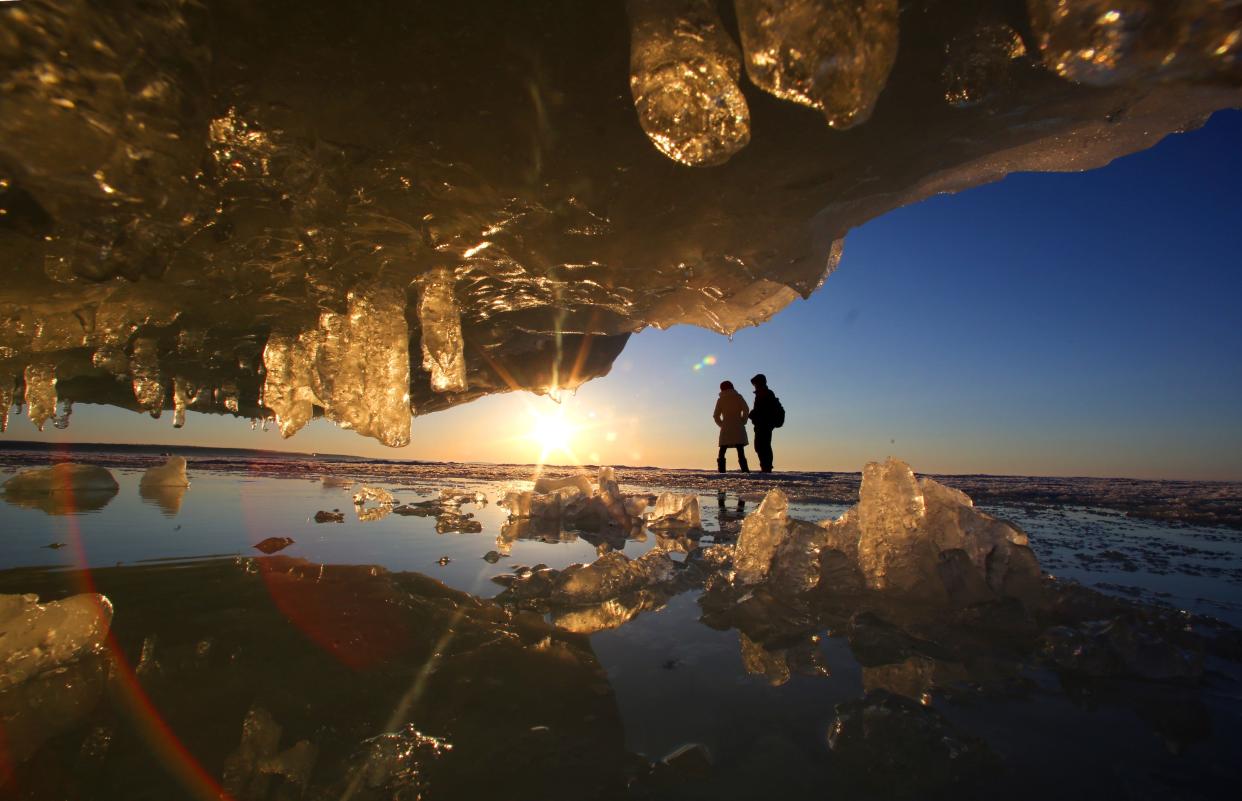Apostle Islands, other Lake Superior national parks aggressively seek net zero carbon emissions
Climate change is making its mark on what many consider the Great Lakes' most pristine lake. In recent years, Lake Superior has seen historic low ice cover, intense fire risk, and nuisance blue-green algae blooms cropping up likely for the first time, tribes and scientists say.
Lake Superior's five national parks are responding by creating the first comprehensive plan in the nation to achieve net zero carbon emissions.
The five parks are the Apostle Islands National Lakeshore in Wisconsin; Grand Portage National Monument in Minnesota; and Isle Royale National Park, Pictured Rocks National Lakeshore and Keweenaw National Historical Park, all in Michigan.
National parks in general do not have large carbon emissions, but these actions are meant to do something bigger: inspire visitors to reduce their own carbon footprints.
About 3 million people visit Lake Superior's national parks every year, and these actions should be powerful tools to educate the public, said Tom Irvine, executive director of the National Parks of Lake Superior Foundation.
Many of the buildings within the parks are roughly the size of a home. Visitors can see proven technology used to reduce carbon emissions, Irvine said.

For instance, the Apostle Islands National Lakeshore is transitioning appliances, and heating and cooling systems, powered by fossil fuels to those powered by electricity. The Grand Portage National Monument, which is co-managed by the Grand Portage Band of Lake Superior Chippewa and the National Park Service, is working to connect the park with renewable grid options.
In Michigan, Isle Royale National Park is piloting a project to use air-source heat pumps in staff housing and administrative buildings. These pumps absorb heat from the air outside and release it inside, reducing energy use by up to 55 percent. Pictured Rocks National Lakeshore is also using electric trail and ground maintenance equipment, like mowers, trimmers and chainsaws. Keweenaw National Historical Park is looking for solar options and green practices in the Calumet and Quincy units of the park.
Irvine said the initiative began with Isle Royale, the most remote wilderness park in the country, consisting of hundreds of islands in the middle of the lake. The infrastructure is powered by diesel generators. Transporting fuel across the lake is worrisome, Irvine said.
It's important to get fossil fuels out of wilderness areas to ensure the long-term success of the parks, Irvine said.
More: Water quality issues challenge what it means to 'leave no trace' in beloved Boundary Waters
More: Progress seen at Great Lakes' second-largest area of concern, on Minnesota-Wisconsin border
Caitlin Looby is a Report for America corps member who writes about the environment and the Great Lakes. Reach her at clooby@gannett.com or follow her on X @caitlooby.
Please consider supporting journalism that informs our democracy with a tax-deductible gift to this reporting effort at jsonline.com/RFA or by check made out to The GroundTruth Project with subject line Report for America Milwaukee Journal Sentinel Campaign. Address: The GroundTruth Project, Lockbox Services, 9450 SW Gemini Dr, PMB 46837, Beaverton, Oregon 97008-7105.
This article originally appeared on Milwaukee Journal Sentinel: Lake Superior national parks act on climate change, reduce emissions
